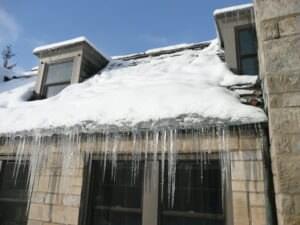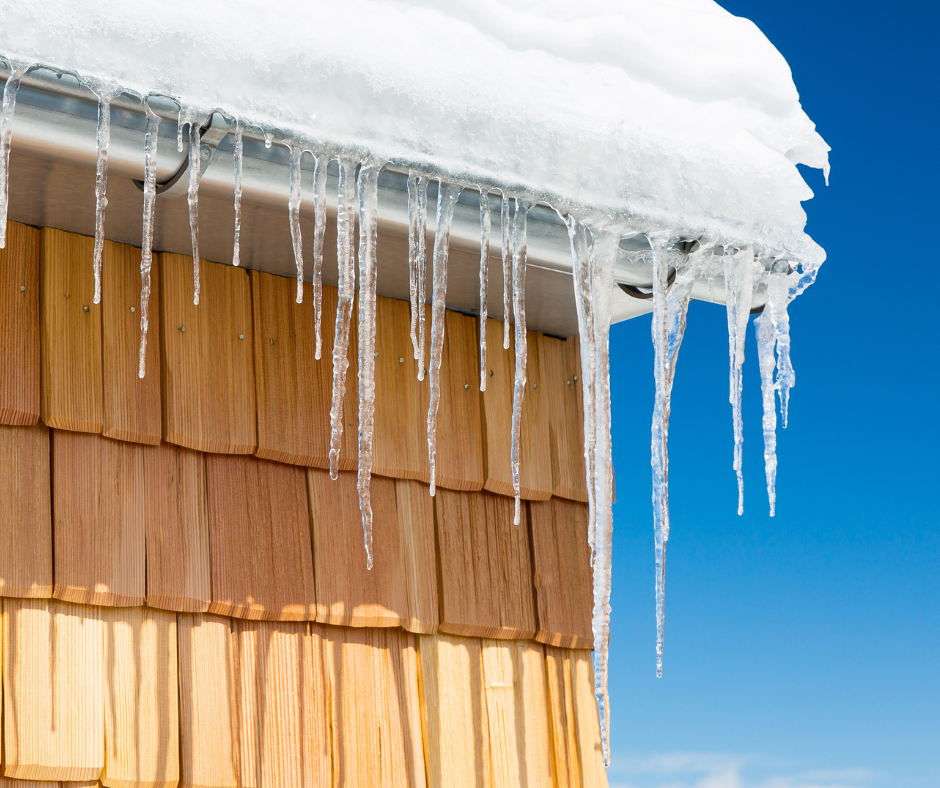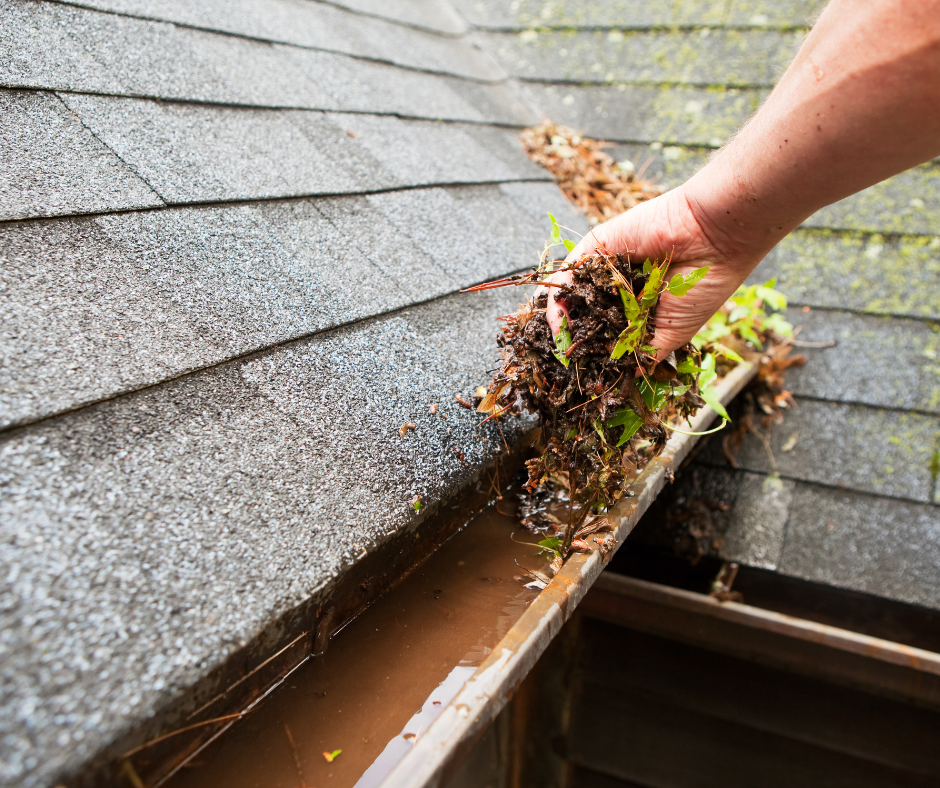Ice Dams: The Main Culprit Of Winter Roof Issues
“Winter is coming.” -Literally everyone in Game of Thrones.
But winter weather is not just a threat to mythical worlds in books and television- it’s a genuine reality that homeowners must face.
Winter brings along the snow, ice, and cold temperatures. And while ice may not seem like a threat to your roof during the winter- you might want to reevaluate.
Water freezes in cold temperatures. But that doesn’t mean your roof is safe from leaking issues during the winter months. The winter can worsen existing leaks issues if they’re left untreated.
If you’re here, it’s probably because you’re worried about the integrity of your roof in the harsh weather that winter brings. And many of the issues that occur in the winter are linked to ice dams.
Rescue My Roof works in the greater Milwaukee Area- and we experience harsh winters every year. In 2020, we experienced a high call volume related to -you guessed it- ice dams.
Ice dams, leaks, a compromised roof- it’s a lot to take in and stress over. But we are dedicated educators within the roofing industry, and we’re here to let you know that ice dams can be prevented.
In this article, we will cover:
- What are ice dams?
- What damage do they cause?
- Why do ice dams form?
- How do I prevent ice dams?
- Will my roofing contractor fix ice dams?
- How much will ice dam repairs cost?
So, by the end of this article you will know how to best protect your home from winter’s biggest home-menace: ice dams. So the next time you see ice building up on your roof, you know exactly what to do.
What Are Ice Dams?
Ice dams are ice formations that build upon the lower portion of your roof closest to the gutters.
Imagine this: it’s a beautiful winter day. You awaken to see that new snow has fallen and the sun is shining, making it look like a layer of glitter on the ground.
You sip your morning cup of joe and listen to Christmas carols. It all seems so quiet and peaceful.
Meanwhile, the hot air at the top of your attic is warming the top portion of your roof, making the snow and ice from last night’s snowfall melt and slide down.

And because the lower portion of your roof is colder due to it being farther away from the interior walls over your home (like an overhanging roof), the water and snow that slides down begins to refreeze.
Over time, because the base of your roof is consistently colder due to the existing ice buildup, the water that slides down continuously refreezes to build up an ice dam.
Slowly the ice dam will begin to creep up the roof. But if you’ve ever suffered the consequence of putting water in a glass and sticking it in the freezer- you’ll know ice expands.
As the ice dam expands and creeps upwards, it can begin to get under your shingles and either worsen or create leak issues.
What Damage Do Ice Dams Cause?
One of the significant issues with ice dams is that ice dams can cause leaks.
When that water refreezes and expands underneath your shingles, it can easily find nail holes and other means of entry into your home.
Now, roofing contractors put down an ice and water barrier, which is designed to keep ice and water out of your home, but it is not 100 percent foolproof.

The barrier is designed to be a last line of defense, and once too much damage is done from the ice dams, the farther it moves up your roof, you can still experience leaking.
However, leaks do not just occur on your roof when you are dealing with ice dams.
Gutters are designed to keep water away from your home. When your gutters freeze over due to ice dams, water runs down the exterior walls of your home, pooling at your foundation.
As a result, water can leak into your basement, causing mold and mildew issues and potentially damaging any items you keep in your basement.
Why Do Ice Dams Form?
To prevent ice dams, we have to look at why they form in the first place.
You’ve already gotten the spiel about how ice dams form, but here are a few reasons why they form:
1. Improper Roof Ventilation
In the creation of the ice dam process, we mentioned that the warm air at the top of your roof heats the snow and causes it to melt.
In a roof with proper ventilation, this would still be the case. Warm air rises to the top of the roof and exits via the exhaust vents.
However, there may be enough exhaust vents in a roof with improper ventilation, but there is a lack of adequate intake vents.
Intake vents are commonly placed under your roof’s gutters and allow for consistent air circulation in your attic space. As the warmer air exists, intake vents bring in cooler air to replace it.
Ventilation keeps your roof a consistent temperature throughout. So when you have proper ventilation, you are less likely to get ice dams because the base of the roof isn’t much colder than the top.
If you have improper ventilation, the top of your roof is lower than the base, and then you begin to see that process of melting and refreezing that creates ice dams.
If you’re worried about having improper ventilation before winter hits, you can read 7 Signs of Poor Roof Ventilation and How to Fix It.
2. Existing Issues With Your Gutters

Most people dread the task of cleaning out their gutters periodically. But there’s a reason why it’s essential.
When there is debris in your gutters, it makes it difficult for the water flowing through your gutters to take its course.
Debris can block water, and in the cold winter month, that water can freeze and expand, turning your gutters into a solid block of ice.
When this happens, water that now melts overflows off the gutters and turns into icicles- which isn’t necessarily the problem (it can be known to add that classic holiday charm to a home).
The issue lies in the fact that the block of ice sitting at the base of your roof makes it even colder. So even if you do have proper ventilation, the ice will continue to refreeze the water that falls from the top of your roof.
This process creates ice dams. Which then can cause issues with leaks. So next time you’re dreading that chore of cleaning out your gutters- think about all of the money you can save from not having to call a roofing company to fix future ice dams.
How Do I Prevent Ice Dams?
Ice dams sound scary- because they can be. Anything that can compromise the integrity of such a vital part of your home, like a roof, can seem frightening.
But not all hope is gone. There are simple things you can do to keep the ice dams at bay and minimize their damage.
1. Routine Cleaning of your Gutters

As we discussed before, one of the things that can cause ice dams in the winter is a buildup of debris that prevents water flow.
To avoid these issues, you have to clean your gutters. Make sure that all sticks, leaves, old frisbees, and tennis balls are clear from your gutters before the snowfall hits.
That way, water can continue to flow through your gutters in the winter, and the base of your roof will be a more stable temperature.
2. Investing in a Roof Rake
Roof Rakes are designed to remove the ice and snow that accumulate at the base of your roof.
Removing the snow from the base of your roof can lower the temperature of that area and prevent the snow on the base from freezing and causing issues.
You can invest in a roof rake, like this one, or use a shovel to try to break up any snow or ice accumulation.
3. Heated Cables
Heated cables are exactly what they sound like. They are heated cords that you can plug into any outlet that is used in the industry to avoid things like freezing pipes and freezing temperatures.
If you string these heated cables along the base of your roof and the gutters, they may be able to meet some of the ice that builds up.
Heated cables don’t add much curb appeal to your house, but they are an option if you know you’ve had issues with ice dams in the past.
4. Call An Inspector to Evaluate your Ventilation
One of the leading causes of ice dams is improper ventilation. Make sure to get your ventilation inspected before winter hits to avoid any issues.
If an inspector comes out and says your ventilation is excellent, then you are less likely to see ice dam issues once winter hits.
If they say you don’t have enough intake vents, it may be time to schedule an appointment to get those installed before weather conditions make it harder to complete the project. Additionally, you can talk to your contractor to discuss the benefits of switching from passive vents to active vents.
Weather like snow and rain can delay roofing projects, so it’s better to get a head-start and contact your local roofing company today to see what your options are.
If you live in the greater Milwaukee area and are preparing for winter, you can contact us to get your free inspection and ventilation estimate.
How Will My Roofing Contractor Fix Ice Dams?
When the standard methods of roof rakes, heated cables, and gutter cleaning do nothing in the battle against ice dams, it may mean there is an issue that is beyond your control.
If your roof has poor ventilation that doesn’t create proper airflow, that may be why the methods listed above aren’t working.
A Roofing Contractor can use a steamer to remove ice dams, as the hot water vapor will melt the ice. This is the most common method in the industry.
Occasionally you will see contractors chip away at thick patches of ice using a mallet. However, this method can and most likely will damage the shingles on the roof. The only safe and effective way a professional can remove built-up ice is with a steamer.
How Much Will Ice Dam Repairs Cost?
The cost of repairs of damage caused by ice dams varies. It depends on the extent of the damage and leaking, or if the contractors will have to replace shingles, wood, or perhaps drywall if it causes leaking issues in the home.
It generally takes between two and four hours to remove an ice dam for an average sized, two-story house. While it may take less than two hours, most contractors in this field charge for a minimum of two hours, regardless of the home’s size. Contractors who remove ice dams typically charge between $400 and $600 per hour, not including the costs of repairing any damage to the decking or interior of your home.
However, to get a proper gauge of what work will need to be done and what the price will look like for you, it is best to contact a roofing contractor to schedule an estimation appointment.
If you have homeowners insurance, make sure to contact them and discuss your policy. Insurance might cover repairs if the ice dam was caused by severe weather conditions like -50 degree temperatures.
The Next Steps to Take Before Winter Comes
Your roof is vital to the safety of your home. So before any chance of worsening weather, it would be ideal to schedule a checkup.
If you are ready to schedule a free estimation appointment today to see what you can do to avoid ice dams and leaks and live in southern Wisconsin, you can contact us today to schedule an appointment.
If you’re not ready to take the leap yet, you can check out other articles like Six Ways to Pay for a Roof Replacement to further prepare you to invest in a new roof or repairs.


